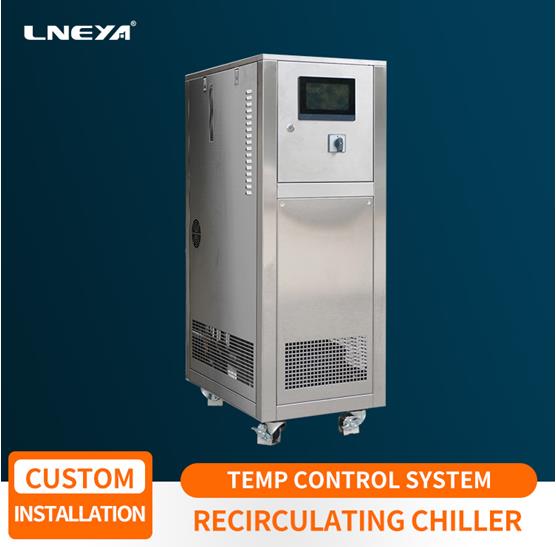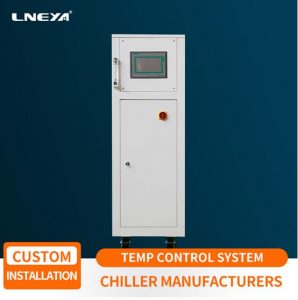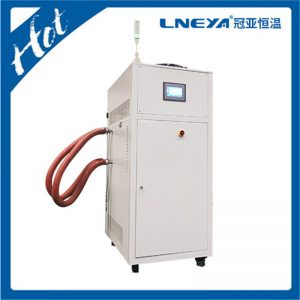What should I pay attention to when adding refrigerant to a water-cooled chiller
In our life, we believe that everyone is
very familiar with refrigeration. In the central air conditioning and
industrial production process cooling industry, small water-cooled chillers is
more common. This unit is composed of a compressor in the fuselage, a
horizontal shell and tube condenser, an evaporator, a thermal expansion valve,
and some related parts. Under the cooperation of these auxiliary parts, the
overall small water cooled chiller is compact in structure, convenient in
operation and control, and is popular among the public in the market.

For refrigeration systems that do not have
a high pressure reservoir and a low pressure vapor-liquid separator, the
control of refrigerant charge is particularly important. Because the
refrigeration system is a condenser and also acts as a high-pressure reservoir,
the refrigerant is stored in the condenser, and the condenser is cooled. The
heat dissipation area is reduced and the condensing pressure is increased,
resulting in a decrease in cooling capacity.
For the control of the refrigerant charge
of such small water-cooled chillers, the following methods are followed during
the filling process:
First, touch the temperature of the
condenser casing.
The upper outlet of the condenser outlet is
heated above the outlet, and the outlet below the outlet is cool. (There is a
description of the high temperature exhaust of the compressor in the inside.
The cooling indicates that the small water-cooled chillers is a liquid space.)
Second, look at the inspiratory pressure.
Corresponding to the temperature of the
refrigerant water in the evaporator. (That is, corresponding to the evaporation
temperature.)
Third, look at the compressor return pipe
temperature.
The high-temperature unit return pipe
should be cooled and dew, but it can be dew condensation to the compressor
return valve; the low-temperature unit return pipe should be frosted, but the
frost can be connected to the compressor return valve. If condensation or frost
builds up on the compressor casing, liquid refrigerant will enter the
crankcase, causing the compressor to run back and cause liquid
problem.
The above is a partial analysis of our
LNEYA technicians for water-cooled chillers. Regarding the specific use of our
water-cooled chillers, you can contact us sales@lneya.com for more detailed
instructions.
관련 권장 사항
-
What are the effects of the oil separator on the equipment analyzed by the chiller manufacturer
910Oil separators use more accessories in thechiller refrigeration system. So as users, we need to understand where the mainimpact is in order to better use the equipment.In the configuration of the chiller, theposition of the oil separator is aft...
세부 정보 보기 -
LNEYA의 재순환 냉각기 사용 시 주의사항
1191LNEYA's low temperature recirculating chillercan be used with supporting instruments (such as rotary evaporators,fermentation tanks, chemical reactors, freeze-drying equipment,biopharmaceutical reactors, etc.), with large cooling capacity and f...
세부 정보 보기 -
오일 냉각식 모터 동력 냉각 시스템을 구매할 때 고려해야 할 사항은 무엇인가요?
1018주변 사람들에게 문의하거나 인터넷에서 직접 검색하고 상담하는 등 여러 가지 방법을 통해 물건을 구매할 수 있으므로 우회하는 것을 피할 수 있습니다. 1. 매개 변수 요구 사항: 인터넷에서 주문하는 것은 ...
세부 정보 보기 -
냉각기의 성에를 어떻게 처리하나요?
1293냉각기에는 여러 종류가 있으며이 작품에 익숙한 고객은 확실히 냉각기에 익숙합니다. 냉각기의 프로스팅에 대해 많은 사람들이 무지한데, 그럼 LNEYA와 함께 자세히 알아 보겠습니다! 1. 냉각기 인 경우 ...
세부 정보 보기
 LNEYA 산업용 냉각기 제조업체 공급 업체
LNEYA 산업용 냉각기 제조업체 공급 업체













